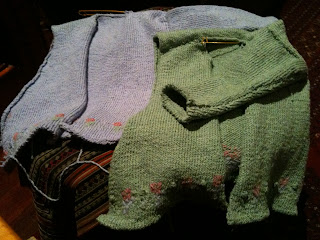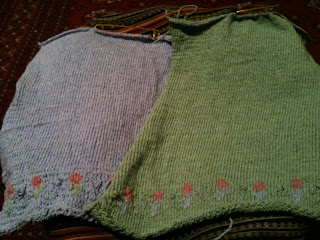
When I was looking for some braid for a skirt recently, my daughter put me on to
Fabricana's Etsy shop.The braid wasn't quite what I was after, but I was sucked in badly by her 'sari scraps' - fat quarters of antique sari fabric in silk and brocade. I ordered a selection which arrived from India within days - a treasure trove of beautiful, inspiring fabric, each piece inviting a story about it's embroiderer and wearers.
I couldn't bear to put the treasure away in my stash, so laundered each piece, got out my bag of taffeta and silk linings and cut 24 bags from the 25 pieces of fabric I bought. I let each piece dictate the shape of the bag and whether it needed lining or not. I have two pieces left uncut.
Over the last few days I have stitched up and finished the first seven bags, lining some of them and using ribbon and cord from my stash, finished off with buttons, beads or old earring pieces to stop the cord from disappearing into the casing.
In the end I restricted myself to simple drawstring bags because the fabric is fine and highly decorated so simple seemed best.
The bag to the left is from a simple piece of brocade while the one below is checked silk appliqued with embroidered medallions and edged with cut work.

I imagine someone commissioning and wearing it for a special celebration.


This piece is patterned silk with the occasional flower in the pattern embroidered and beaded. I used shells from earrings to finish the ties and lined this one in a piece of blue Vietnamese silk.
The detail featured at the top of this blog post is again embroidered silk, this time with motifs embroidered in running stitch on the dyed silk - red merging into green.This one is lined with maroon taffeta.

I used a small glass chilli from a Chinese decoration to finish the ties on the maroon silk bag below, from a satin-stitched and scalloped border piece.
.
This bag I lined in figured blue Vietnamese silk to reinforce the transparent blue of the over-dyed muslin. This piece has it all - embroidered in paisley-like patterns, beaded and sequinned.
Embroidery on the body of the fabric is in a pale gold thread, while the border is stitched with deeply coloured thread.

Finally, I made an open-topped carry bag with both long and short handles to do justice to the design of this strikingly dyed and gold-thread embroidered piece of fabric.
Including postage, the cost of the fabric averaged $4.50A for each bag . Allowing a little for lining, cord or ribbon, they probably cost around $5-5.30 per bag. I am not thinking of selling them, but I worked it out to see if bags using this fabric would recover their costs at a fete or charitable event. I think they would.
There is certainly much pleasure in the making.




















































